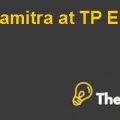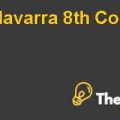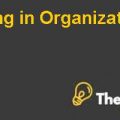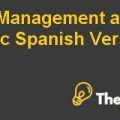Question 1
The objectives for the Kaizen event in the PSEM Department
Carrier and Kallish are first-year students at the Darden Business School who have found the opportunity with ten other students to participate in a week-long event at Precise known as Kaizen, a Japanese word for continuous improvement, which is used in manufacturing. The event took place on a Sunday evening and they metMr. Frampton, the president of European operations at Precise. Mr. Frampton issued two clear objectives for the plant’s Proven Special Electric Motor (PSEM) to Carrier and Kallish.These objectives include achieving a 40% reduction in gross inventory and a 35% increase in the productivity.
Question 2
Wastes present in the current PSEM department
Waiting:
Operators frequently waited for one of the machines to be available before they could begin performing the necessary step on their batch of motors. This may lead to the idleness of the workers, which would resultin the wastage of labor costs.Moreover, this shows the shortage of the equipments in the manufacturing line. The company should ensure that the appropriate amount of machinery is present in the manufacturing division of motors.
Rework:
Kallish has been observing the repetition of the work carried out by the operators. Kallish observed an operator in identifying a problem when testing for noise.The operator had accidentally used the wrong part to connect the rotor and stator.As a result of this, the time spent by the labor was not adding value to the production line and hence, the time was wasted.This shows that there is less skilled staff in the testing division; therefore the company should employ skilled labor in testing the equipments.
Motion:
Workers often waste their time in finding their tools here and there in the different departments. This resulted in waste of time spent by the labors and this may be due to the shortage of the tool kits. The company should make tools available for every worker so that the workers do not have to rely on other’s tools.
Question 3 and 4
Question 3 and 4 havebeen calculated in the excel file
Question 5
Evaluating Carrier and Kallish's work on the kaizen event
Carrier and Kallish haveanalyzed the weaknesses of the manufacturing of the motors at Precise and have seen the possibilities fulfilling the objectives, which were given to them by Mr. Frampton. For this purpose, Carrier and Kallish have analyzed the performance of the labor in Precise and the wastages related to the labor.Some examples of the waste of labors’ time include wastage of time in finding tools in different departments, the labors perform the testing poorly, which results in repetition of the work; for example, in testing thenoise the operator had accidentally used the wrong part to connect the rotor and stator.Moreover, theyalso worked on the average time consumed by an operator on each step of the manufacturing of the motor at Precise.
Czech Mate Jake And Dan’s Marvelous Adventure (A) Harvard Case Solution & Analysis Case Solution
Carrier and Kallish have also foundout that operators did not seem to be fully engaged and were often absent altogether. Typically, one had been pulled away to help nearby service personnel. Kallish supposed that if the wastewassuccessfully eradicated, then the labor could be transferred to another step as needed. Carrier and Kallish havealso pointed out that all raw materials shouldbe inside the cell as well. Depending on demand, the cell would be able to accommodate anywhere from one to five operators. In order tofacilitate single-piece flow, there would be room for one piece of standard WIP in front of each operator: an empty space would signal the need to pull the next motor through the cell. In addition to eradicating waste and reducing cycle time, thelean production model could serve as a baseline for metrics.
Kallish has also recommended that the process should be consolidated into three workstations; steps 1 and 2 at the first station, steps 3 and 4 at the second, and step 5 at the third. The entire cell would be located adjacent to the test cell so that the motors would flow directly into testing. Additionally, the press and vice would now be included inside the cell at stations 1 and 3.......................
This is just a sample partial case solution. Please place the order on the website to order your own originally done case solution.













